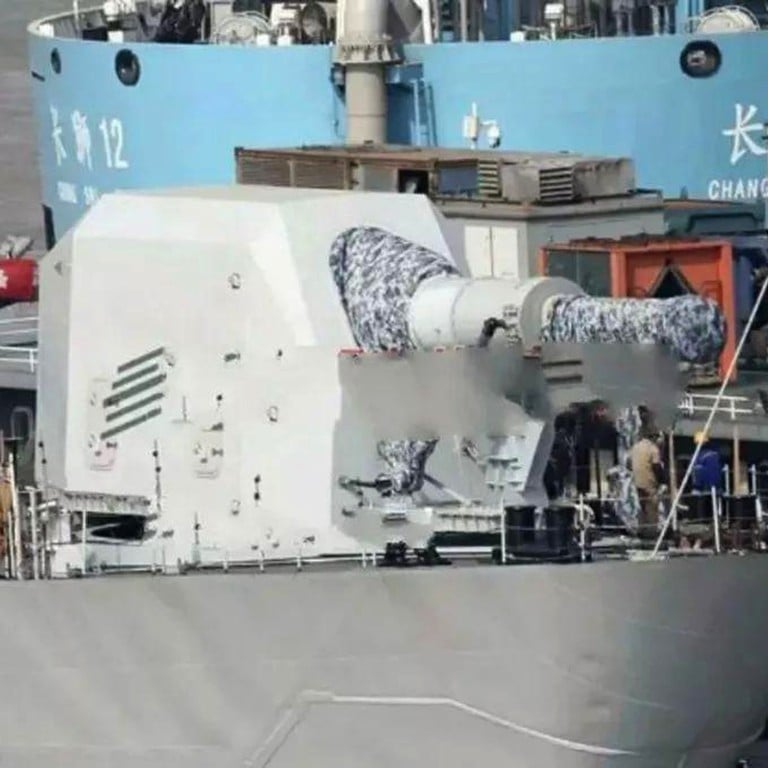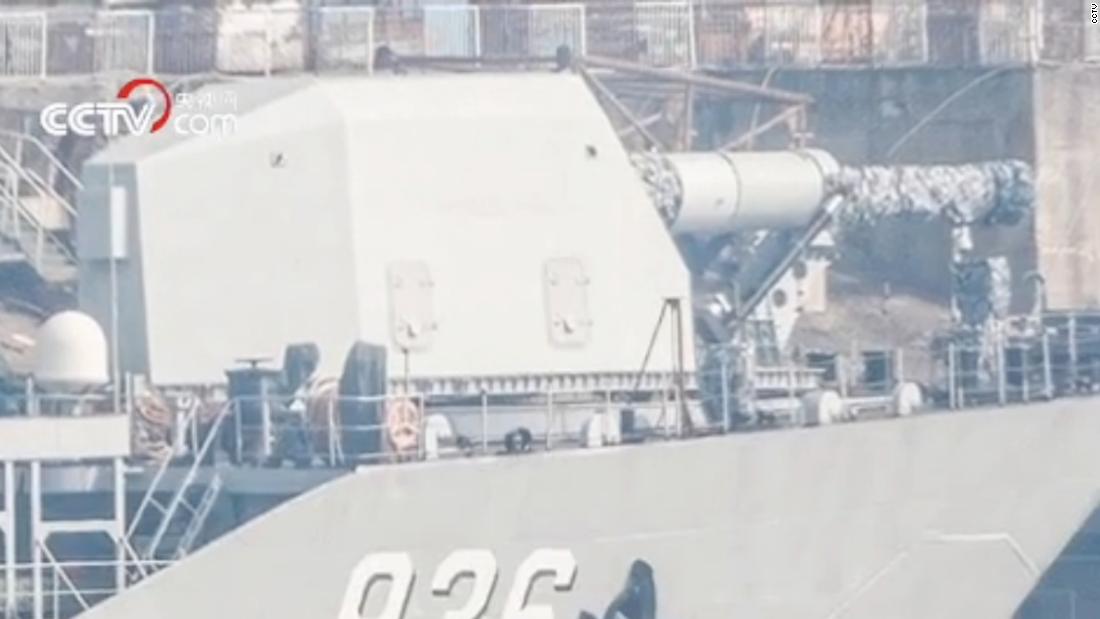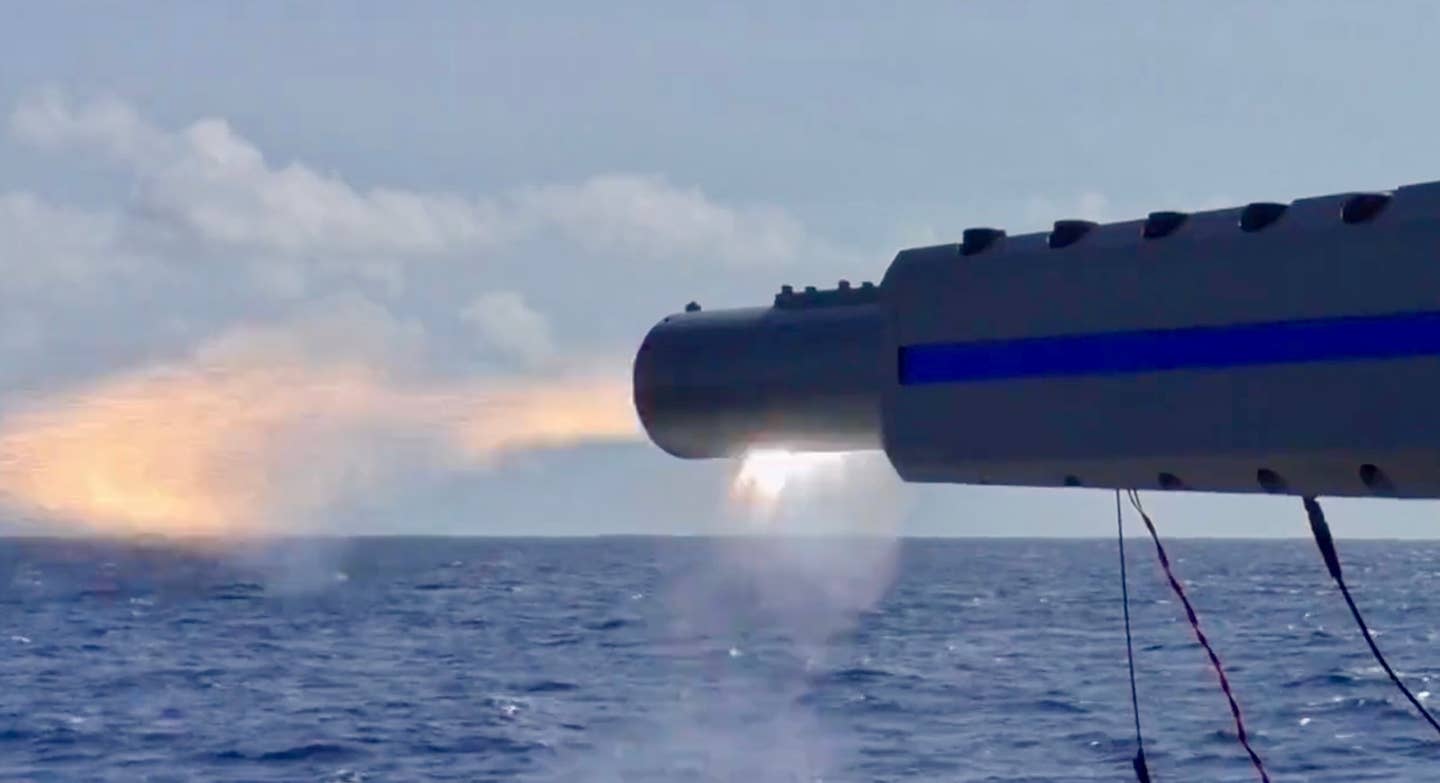China’s Hypersonic Rail Gun Test Fails As It Looked To Launch Smart Bomb Into Stratosphere – Reports

The Chinese navy recently conducted a test of an electromagnetic rail gun, launching a precision-guided munition into the stratosphere at hypersonic speed.
The test involved firing a smart bomb to a height of 15 kilometers into the stratosphere at a speed surpassing Mach 5, or five times the speed of sound.
Despite the initial excitement over the successful launch, the experiment was later deemed unsuccessful. The Chinese media report said that the projectile did not follow the anticipated trajectory, and both the maximum range and altitude fell short of design values.
Upon analyzing data transmitted back to the ground by the smart bomb, Lu’s team identified a critical issue: the projectile was rotating too rapidly during its ascent, causing an unintended tilt.
This discovery led to the realization of a technical hurdle known as “rotational speed latching,” which posed a significant challenge to the practical application of rail guns.
Get AfriPrime Android Web View app....Click the link to Amazon app store to download https://rb.gy/3xek46

The report added that Chinese researchers were able to pinpoint the cause of the failure and devise potential solutions by applying artificial intelligence technology.
Their findings shed light on the complexities involved in the operation of electromagnetic rail guns, which defy conventional physical theories. One of the key challenges highlighted by the researchers is the need to control rotational speed during launch.
Unlike conventional artillery, which relies on spiral grooves in the barrel to stabilize trajectory, rail gun technology requires a different approach. The projectile’s prolonged exposure to the electromagnetic barrel presents unique challenges, including friction-induced heat and pressure.
Further complicating matters are external protrusions on the projectile, such as gliding wings and tail rudders, which can undergo deformations during launch. These deformations, though minor, can have major implications for aerodynamic stability, particularly in hypersonic environments.
Moreover, in their quest for solutions, the researchers encountered computational challenges. The complex interplay of multi-body physics in extreme environments defied existing physical laws and mathematical tools, underscoring the need for innovative approaches to overcome technical hurdles in rail gun technology.
Despite the setback, the lessons learned from this test will assist future efforts to harness the full potential of electromagnetic rail guns for China’s national defense and security.

Development Of Electromagnetic Railgun
The railgun, a powerful weapon harnessing electromagnetic force to propel projectiles at extraordinary speed, has long captivated military imaginations.
Dating back to World War I, when French engineer André Louis Octave Fauchon-Villeplée conceptualized an electromagnetic railgun in 1879, the idea has persisted through decades of research and development.
However, despite the tantalizing promise, railguns remain largely confined to the realm of experimentation and conjecture.
The fundamental principle behind railguns, harnessing electromagnetic fields to propel projectiles, presents both advantages and challenges compared to traditional chemical combustion-based weaponry.
Japan recently emerged as a noteworthy contender in the race to develop operational railgun technology. Last year, Japan achieved a milestone by successfully test-firing a medium-caliber maritime electromagnetic railgun from an offshore platform. That marked the first instance where any nation had achieved such a feat.
Get AfriPrime Android Web View app....Click the link to Amazon app store to download https://rb.gy/3xek46

On the other hand, the United States, despite substantial investment and research, ultimately shelved its railgun projects. Initiated in 2005, research into electromagnetic railgun designs from BAE Systems and General Atomics faced obstacles ranging from fiscal constraints to technical challenges.
The decision to terminate funding for railgun development in the Navy’s Fiscal Year 2022 Budget underscored the complexities and uncertainties surrounding the technology.
In contrast, China has demonstrated a steadfast commitment to advancing railgun technology, exemplified by its recent test of an electromagnetic railgun. While the test did not achieve its intended objectives, it signals China’s determination to invest significant resources in the development of this cutting-edge weaponry.
China’s foray into railgun technology was first noted in 2018 with the unveiling of an advanced naval railgun prototype. Previous claims from China suggest the development of a system capable of propelling a 124-kilogram projectile at speeds exceeding 700 kilometers per hour in under 0.05 seconds.
With sights set on integrating railguns into future naval assets, China envisions these weapons as core components of its military strategy, potentially reshaping the dynamics of modern warfare.
However, challenges persist in the practical application of railgun technology. Trade-off analyses between electromagnetic propulsion and conventional chemical propellants must consider various factors, including durability, availability, and cost-effectiveness.
Moreover, the bulkiness and energy demands of railgun systems pose serious engineering hurdles that require innovative solutions.
Get AfriPrime Android Web View app....Click the link to Amazon app store to download https://rb.gy/3xek46
- Questions and Answers
- Opinion
- Story/Motivational/Inspiring
- Technology
- Art
- Causes
- Crafts
- Dance
- Drinks
- Film/Movie
- Fitness
- Food
- Games
- Gardening
- Health
- Home
- Literature
- Music
- Networking
- Other
- Party
- Religion
- Shopping
- Sports
- Theater
- Wellness
- News
- Culture
- War machines and policy

